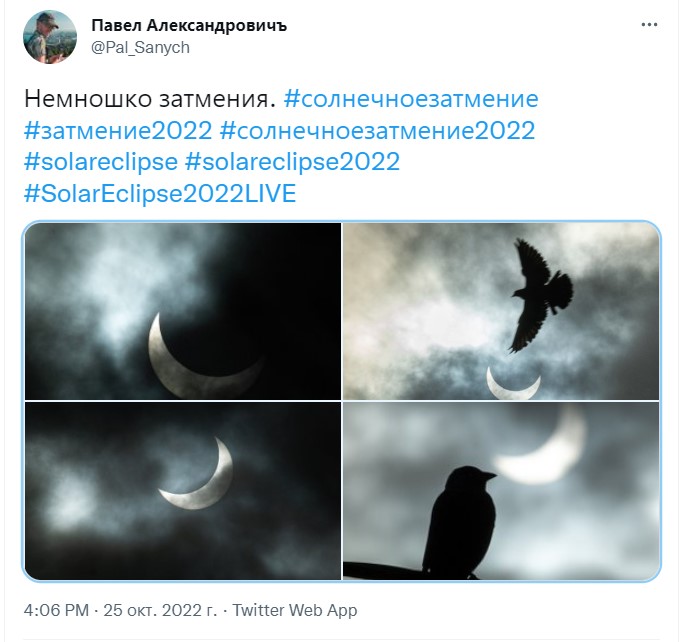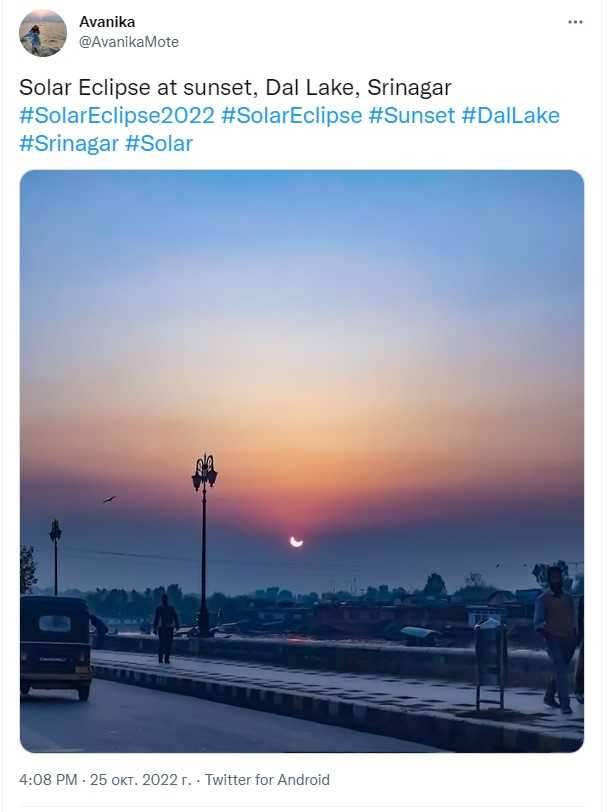A partial solar eclipse has skywatchers around the world excited. It started at 8:58 GMT
The most fortunate inhabitants of Western Siberia, forwhich the satellite blocked almost 82% of the Sun. Professional telescopes and amateurs around the world took the rare opportunity to capture this natural phenomenon.
How often do eclipses occur?
A solar eclipse occurs when the moonis in orbit between the Earth and the Sun. At this moment, the Sun illuminates the far side of the Moon; such a phenomenon can only occur on a new moon. Neither solar nor lunar eclipses can occur every month. The orbit in which the satellite moves around our planet is inclined by 5 ° to the plane of the ecliptic (earth's orbit). Therefore, usually on a new moon, the satellite is above the star, and on a full moon, it is below the shadow of the Earth.
Eclipses usually come in pairs or triplets.This is due to the fact that every 173 days, for 31 to 37 days, the Moon crosses the ecliptic during its movement. As a result, depending on the phase of the satellite during this period on our planet, one can see a total of two to three solar and lunar eclipses. This time, the solar eclipse on October 25 will be followed by a lunar one. The satellite will enter the Earth's shadow during the full moon on November 8.
How did it look?
Partial solar eclipse was not visible to everyonethe inhabitants of the Earth, in addition, in some cities too dense clouds prevented viewing, but thanks to various live broadcasts, users around the world were able to see how this happened.
For example, the site's mobile observatory teamTime and Date broadcast observations of the partial eclipse from around the world from the UK to Pakistan. For lovers of astronomical phenomena, a record of a four-hour observation is available. It will help to go all the way, which would be simply impossible when observed from one place on Earth.
Time and Date project solar eclipse recording
And for those who want to see the whole event from one point, there are several options at once: observations from Greenwich and Naples, in which the Moon covered less than half of the star.
Recording of a solar eclipse from the Royal Observatory Greenwich
Recording of a solar eclipse from Italy by the Virtual Telescope project
And you can watch the broadcast from Ufa, where the Sun has disappeared almost completely.
Recording of a solar eclipse from the Ufa Observatory
Eclipse in photographs
Amateur observers and professional astronomers share their impressions and photos on Twitter.
For example, the British astronomer Tom Kerss (TomKerss posted a 4K image from London as the eclipse reached its maximum for the area. The photo shows not only the jagged edge of the moon, but also solar activity (spots), he noted in the comment.
 Solar eclipse in London. Image: Tom Kerss, Twitter
Solar eclipse in London. Image: Tom Kerss, Twitter
Moscow weather made it possible to observe the eclipse onclear sky, and the inhabitants of Kazan got an amazing mystical effect created by a combination of a darkened surface of a star and clouds. This is how the web designer from Moscow Tatyana Dementieva and Kazan photographer Pavel Alexandrovich saw the Sun.
 Solar eclipse in Moscow. Image: Tatiana Dementieva, Twitter
Solar eclipse in Moscow. Image: Tatiana Dementieva, Twitter
 Solar eclipse in Kazan. Image: Pavel Alexandrovich, Twitter
Solar eclipse in Kazan. Image: Pavel Alexandrovich, Twitter
But such a terrible picture through the clouds was made by Mark McCaughrean from the city of Wassenaary in the Netherlands.
 Solar eclipse in the Netherlands. Image: Mark McCaughrean, Twitter
Solar eclipse in the Netherlands. Image: Mark McCaughrean, Twitter
The people of India were among the last who couldwatch the eclipse. It came to them already at sunset, but this only added beauty to the pictures. For example, this photo of a partial solar eclipse on Dal Lake was taken by Avanika Mote.
 Solar eclipse in India. Image: Avanika Mote, Twitter
Solar eclipse in India. Image: Avanika Mote, Twitter
Read more:
Starlink signal hacked to be used as an alternative to GPS
"Hubble" looked into the "keyhole" of the universe
NASA revealed the origin of Haumea - the most mysterious planet in the solar system